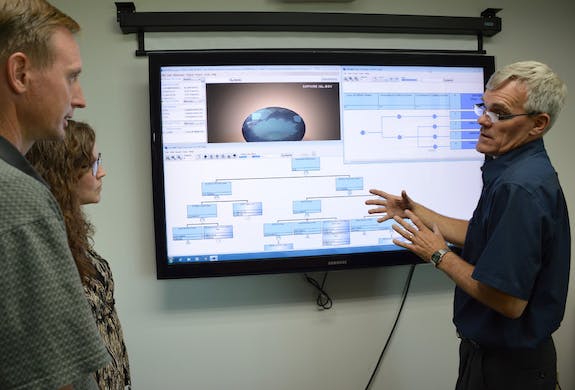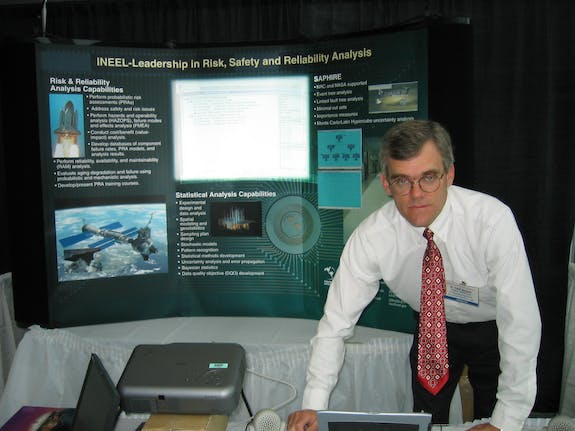Looking out a window of his home, Ted Wood can see the log cabin his grandparents built more than a century ago. Both cabin and house sit on the 40-acre family farm in Idaho that Wood now manages.
Farmers know that life is full of risks. Drought can be followed by floods, and prices can fluctuate, moving from low to high or vice versa because of what happens thousands of miles away. Accurately gauging and accounting for risk can be crucial to a farmer’s success.
In some ways, then, it’s fitting that risk assessment has defined Wood’s 33-year career at Idaho National Laboratory. For his body of work, Wood won an award in 2020, a top recognition from his peers at the American Nuclear Society. A software analyst in the Risk Assessment & Management Services Department, Wood is the software team leader and lead software developer for SAPHIRE, (Systems Analysis Programs for Hands-on Integrated Reliability Evaluations), a program that estimates risk.
Insight in an Instant
To do this, users develop models that are abstractions of such real-world systems as nuclear reactors or space vehicles. The users then put these models through SAPHIRE, and the software calculates the probability of something going wrong. This information can then be used to alter the design and construction of the system so that the risk of a specific problem becomes acceptable.

The ultimate goal is to do this in real time, Wood said. Suppose an inspector touring a power plant notices a pump is out. With the right tool, the inspector can change the model to reflect the outage, evaluate the effect and answer some important questions.
“What does that do to my overall risk?” Wood said in discussing this hypothetical situation. “Is it enough of a change that more needs to be done? Do we need to shut the plant down? Bring in more equipment – maybe a replacement pump?”
Getting closer to that goal of near instantaneous risk assessment of complex systems is one reason why the version of SAPHIRE now under development will be web-based. Doing so could enable inspectors in the field to carry tablets yet access massive computing power and large amounts of storage through the cloud. More computing power and storage provides the ability to run larger, more complex models that better represent actual systems. Using the cloud also makes it possible to receive answers more quickly, which can make getting results for an inspector on-site more feasible.
One in a Quadrillion
Over some 30 years, Wood has seen SAPHIRE, now on version 8, undergo significant changes. Originally a text-based program, the software has moved to more advanced technologies that improve visualization of results and allow larger and larger models.
With each new SAPHIRE version, the software development team carefully checks to ensure the new version yields a risk probability that is the same as one produced previously.
Wood noticed that users do the same thing. They will contact him if differences between the results of two versions differ by as little as one part in a quadrillion – that’s a one followed by 15 zeros. For any discrepancies, Wood and the rest of the development team look over the models in order to help determine the cause of the difference and its significance.
Around the World and Back
Work on SAPHIRE has taken Wood around the world. He’s taught classes on the software in Russia after helping port SAPHIRE to Cyrillic, an alphabet used in Russia and across Eurasia. Both the classes and port made a lasting impression. Another memorable episode happened during training for NASA personnel on the use of the software. While doing so, Wood got near enough to a launch for it to be a multisensory experience.

“I got to be as close as anybody down at Kennedy Space Center. Close enough that the vibration of the air being pushed out by the rocket engine is making your pants shiver,” he recalled.
He credits his success in the field of risk assessment to teamwork. Some of that comes from INL, where a dedicated staff has been developing and refining SAPHIRE and its predecessors for decades. Some of this help comes from home, where Wood noted that his wife Carolyn’s support has allowed him to ply his craft.
“You keep working at something and hopefully you do some good,” he said in summing up his career so far and any recognition that has come his way. “I very much do not consider myself a giant but somebody that tries to create tools that will help people become giants.”







